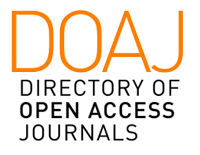[GW28-e0048]
Cordyceps Sinensis prevents contrast-induced nephropathy in diabetic rats by inhibiting p38 MAPK and Akt/mTOR/P70S6K signaling pathways
Kai Zhao1 Qiaoying Gao2 Kai Zhao1
1.Department of Cardiology, Tianjin Nankai Hospital
2.Department of Pharmacology, Institute of Acute Abdominal Diseases, Tianjin Nankai Hospital
Objectives: Apoptosis is recognized as an important mechanism in contrast-induced nephropathy (CIN). Cordyceps sinensis (CS), a time-honored tonic food and herbal medicine in China, can improve the microcirculation, increase the tolerance to ischemia in patients with microcirculatory disorders. As CS has been found to be renoprotective and anti-apoptotic in multiple kidney injuries, we hypothesized that CS would prevent CIN. The objective of this research is to study the mechanism of CS on tubular epithelial cell apoptosis in diabetic CIN rats.
Methods: Eighty SD rats were randomly divided into four groups of twenty rats each: control group, rats treated with low-dose CS group (CS 2.0g/kg, per day), rats treated with middle-dose CS group (CS 2.5g/kg, per day), and rats treated with high-dose CS group (CS 3.0g/kg, per day). We used a rat model of Iodixanol-induced CIN. Serum creatinine, blood urea nitrogen, urinary kidney injury molecule-1 (KIM-1), interleukin (IL)-18 and neutrophil gelatinase associated lipocalin (NGAL) were measured to evaluate kidney function. Nitric oxide (NO), malonaldehyde (MDA), and superoxide dismutase (SOD) level in renal tissue homogenate were assessed to discuss the effect of CS on oxidative stress in CIN. The pathological changes of kidney were observed by hematoxylin and eosin (HE) staining and immunohistochemistry (IHC) analysis. Apoptosis was assessed by transmission electron microscopy and transferase-mediated deoxyuridine triphosphate nick end-labeling (TUNEL) staining. Fork-head box O1 transcriptional factor (FoxO1) mRNA expression was evaluated by quantitative real-time PCR. Phospho-p38 mitoge-activated protein kinase (MAPK) and Akt/mTOR/P70S6K protein expression was assessed by immunohistochemistry and Western blotting.
Results: Pretreatment with CS attenuated the effect of induction of CIN, and the absolute increase of Scr, BUN, KIM-1, IL-18, NGAL, NO, MDA and SOD levels were significantly lower than in the control group (p<0.05).
Histological evaluation of kidney sections in the CIN group revealed severe vacuolization of the renal cortex, intratubular cast formation, and medullary congestion. Pretreatment with CS markedly attenuated the development of these lesions. In addition to CS, renal tubular apoptosis was assessed by TUNEL staining in kidney sections. When compared to the control group, TUNEL-positive tubular cells were markedly decreased in the pretreatment with CS groups. To further confirm the presence of apoptosis in CIN rats, we investigated the cleavage of caspase-3, caspase-9 substrate, using Western blotting. Pretreatment with CS significantly decreased the apoptotic cell numbers. Rats treated with high-dose CS group were even lower than those in the control group (p<0.01).
We examined whether the increased tubular epithelial cell apoptosis was associated with Bax, Bcl-2 in vivo. Mechanistically, CS inhibited inducible Bax protein expression while it upregulated Bcl-2. In addition, CS decreased the expression of p38 MAPK, Akt/mTOR/P70S6K and FoxO1 signal pathways.
Conclusions: In summary, CS can effectively reduce kidney damage caused by contrast medium. The underlying mechanism may be that CS accelerates the recovery of renal function and renal pathology by reducing local renal oxidative stress and inhibiting p38 MAPK, Akt/mTOR/P70S6K and FoxO1signal pathways. Thus, CS may be a new potential therapeutic agent to prevent CIN, and high-dose CS might be more effectively.














